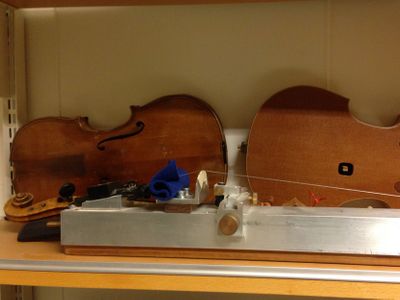Acoustics: Wave equation, plane and spherical waves, electrical-acoustic-mechanical analogies. Eigenmodes, strings, membranes, and pipes. Fourier transforms and spectra.
Auditory Perception: The physiology of the ear. Frequency and pitch, vibrato. Amplitude and loudness. Masking. Spectrum, timbre, roughness. Perception of sound structures.
Musical instruments: Mechanical design. Principles of excitation source spectrum, feedback and spectral shaping by resonators. Spectral contents in steady-state and transients. Sound radiation. Brass, woodwind, strings, piano, organ, singing. Numerical synthesis.
Scales and Tuning: Equal temperament, Pythagorean and just tuning. Measurements on performed music, pure and stretched octaves.
Room Acoustics: Basic concepts, sound propagation in rooms, binaural hearing, artificial head stereophony.
Modelling and Computer Music: Synthesis methods. Physical modelling, control parameters.
